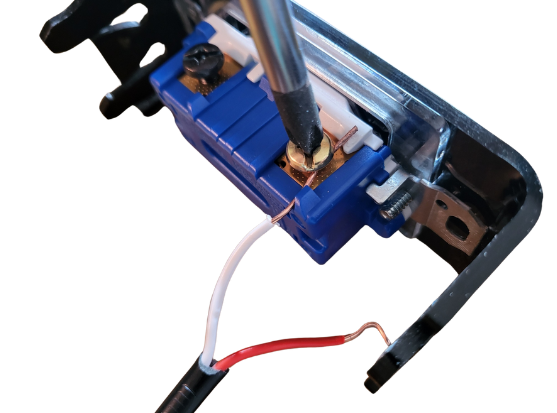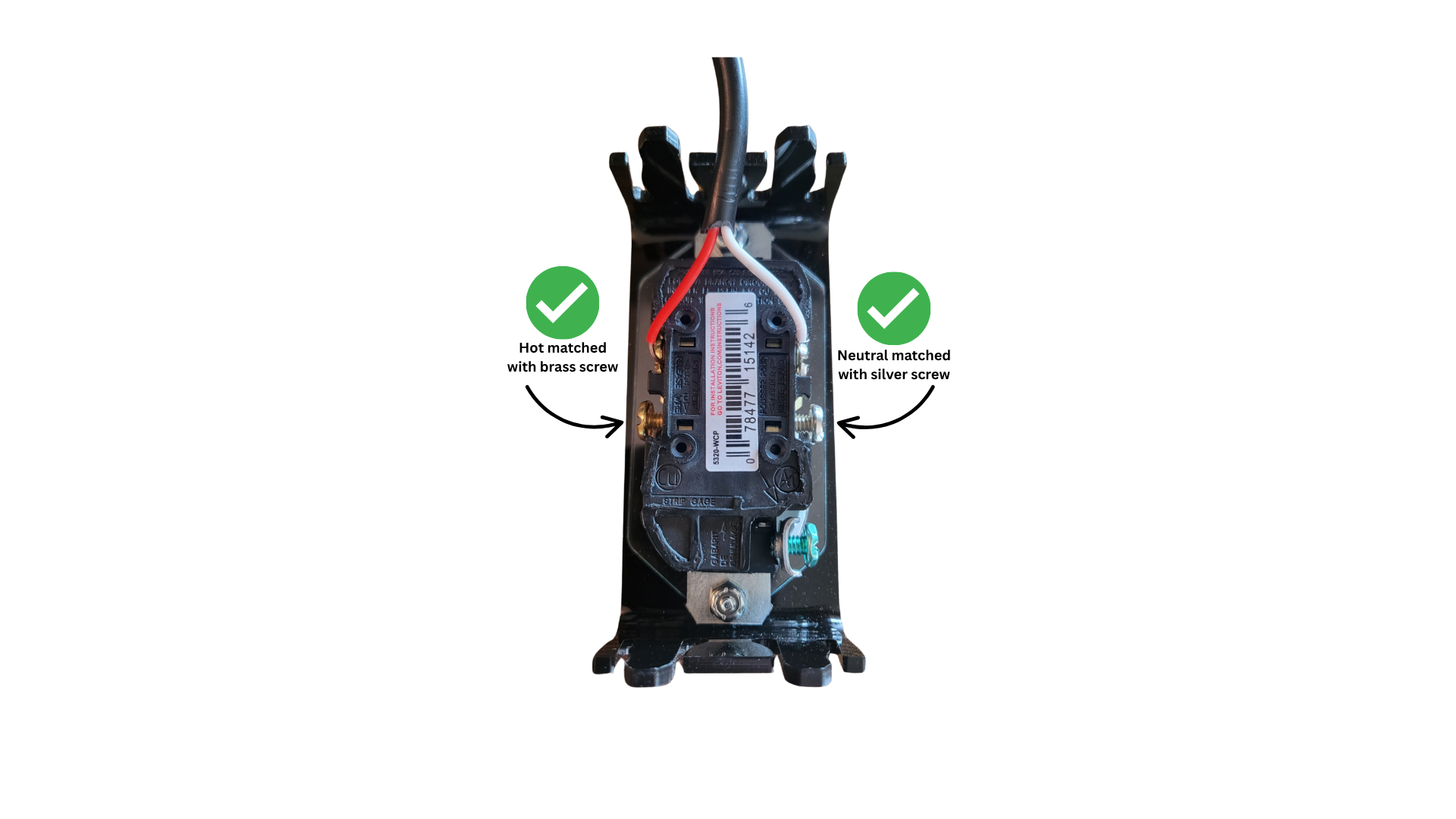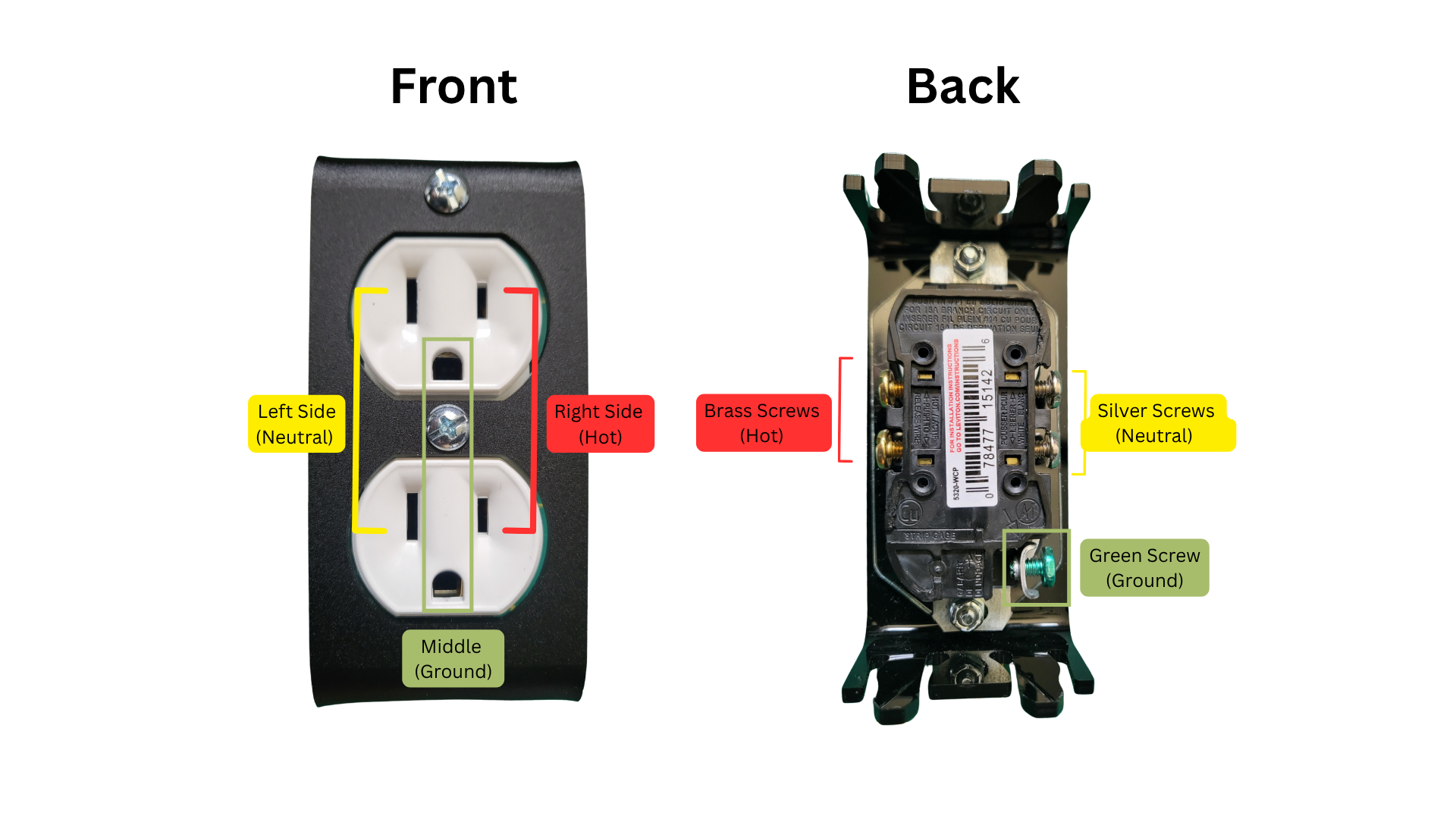Common Electrical Issues
Common Electrical Issues
There are numerous mistakes that can arise in the world of residential electrical wiring. Below are some of the more common mistakes you may encounter:
Poor or Improper Connections

When wiring a circuit, it is critical to make solid, physical connections at each point. Loose connections are a safety hazard and can lead to shorts, intermittently faulty circuits, arcing, and fires. It is important to make sure each screw is appropriately snugged to hold the wires and that the wire makes a nice “J” hook, clockwise, around the terminal.
Crossed Wires or Miswiring

Another common mistake is connecting wires improperly. This can result in a non-functioning circuit or, even worse, a short. An improperly wired or labeled circuit can also be a potential hazard to the homeowner or the next electrician working on the circuit.
In the image above, there is a properly wired outlet. If the two wires were on the same side, it would create a short in the circuit. Crossing the wires from left to right means that the polarity of the plug is reversed! Recall in Lesson 6 that, from the front of the plug, the left is neutral and the right is hot. Switching the hot and neutral may not cause immediate damage to whatever is plugged in, but it may lead to shocks, which are a safety hazard.

Faulty or Incorrect Components
As with most things, electrical components can wear out with age. As switches go through repeated cycles, plugs get inserted and removed from outlets, and components generally get used, they need to be replaced. It is also a good idea to replace components when the original components are out of date or physically damaged.
Beyond components showing their wear, ensure you are using the correct component for the job at hand. Using a 15 amp-rated component in a 20 amp circuit will become a point of failure. A 15 amp-rated outlet is designed to work with a 15 amp current. If higher current flows through the circuit, then the outlet can heat up, causing deformation, shorting, and potentially fires.